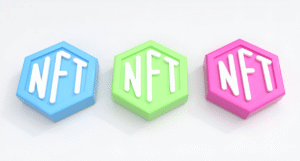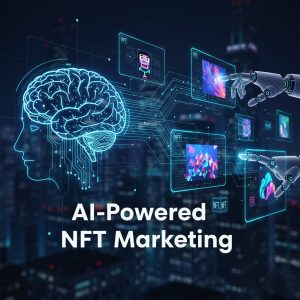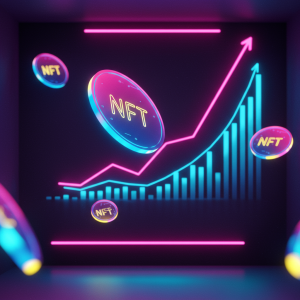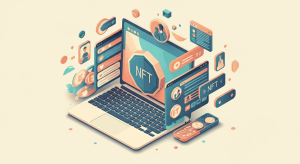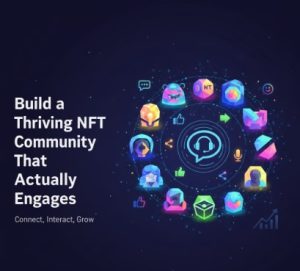NFT Analytics Tools for Market Intelligence

The NFT marketplace has evolved far beyond its speculative beginnings into a sophisticated ecosystem where data-driven decisions separate successful collectors and creators from the rest. Understanding the available analytics tools and how to interpret their insights can provide crucial advantages in identifying trends, timing market moves, and gauging collection potential.
The Evolution of NFT Intelligence
Early NFT traders relied primarily on social signals and floor prices when making decisions. Today’s savvy participants leverage comprehensive analytics platforms that reveal deeper market dynamics. These tools expose patterns invisible to casual observation, allowing for strategic rather than reactive approaches to the market.
Real-time analysis has become particularly valuable as collection fortunes can shift dramatically within hours based on influencer attention, token utility announcements, or broader crypto market movements. The most successful collectors now maintain dashboards that aggregate multiple data sources to provide holistic market views.
Volume vs. Liquidity Insights
Trading volume alone can be a misleading metric in NFT markets. High volumes sometimes mask wash trading or concentrated activity among few wallets. Advanced analytics tools now differentiate between genuine market activity and artificial inflation by examining unique buyer counts, wallet diversity, and transaction patterns.
NFT Observer provides excellent liquidity analysis that distinguishes between healthy and manipulated collections. Their proprietary scoring system evaluates wallet concentration ratios and transaction authenticity to identify sustainable marketplace activity.
The difference between volume and liquidity becomes especially crucial when evaluating emerging collections. Projects with modest but distributed trading often outperform high-volume collections dominated by few participants over the long term.
Holder Behavior Analysis
Perhaps the most revealing metrics concern what happens after initial mints. Analytics platforms now track holder behaviors including average retention periods, wallet clustering, and secondary market participation rates. These insights reveal community strength beyond initial hype cycles.
Our comprehensive NFT community engagement metrics guide explores how holder behavior predicts collection longevity and which signals indicate potential growth or decline before price movements occur.
Applications like holder distribution charts reveal whether collections maintain healthy balances between whales and smaller collectors. Collections dominated by a few large holders often experience more volatility and manipulation risk compared to those with broader ownership distribution.
On-Chain Activity Integration
The most sophisticated analytics tools now integrate on-chain activity beyond marketplace transactions. These include tracking interactions with associated DeFi protocols, governance participation, and utility token staking behaviors among collection holders.
Dune Analytics provides customizable dashboards that correlate NFT ownership with broader Web3 activities, revealing connections between collections and larger ecosystem participation. Their open query system allows analysts to discover novel relationships between seemingly unrelated protocols and NFT projects.
This cross-protocol visibility helps identify collections serving as access tokens to broader ecosystems rather than standalone assets. Projects demonstrating high utility engagement often maintain value better during market downturns compared to purely speculative collections.
Sentiment Analysis Beyond Social Metrics
While Twitter follower counts and Discord member numbers provided early proxy metrics for project popularity, today’s analytics incorporate natural language processing to evaluate sentiment quality. These tools assess conversation depth, community response patterns, and creator engagement levels across platforms.
Sentiment analysis reveals emotional trajectories that often precede price movements. Collections generating substantive discussions about utility and roadmap progress typically outperform those dominated by floor price conversations in the mid-term.
Rarity Algorithms and Fair Value Calculations
Rarity tools have evolved beyond simple trait counting to more sophisticated algorithms that account for visual appeal, trait synergies, and historical preference patterns. Advanced platforms now generate fair value estimates based on statistical analysis of comparable sales, allowing for identification of undervalued and overvalued assets within collections.
These valuation models help collectors identify market inefficiencies where assets trade below statistically predicted prices. Such opportunities typically emerge during broader market volatility or when less sophisticated sellers misunderstand their assets’ relative value.
Wash Trading Detection
As NFT markets have matured, so have manipulation techniques. Modern analytics platforms incorporate sophisticated wash trading detection algorithms that identify suspicious transaction patterns between related wallets. These tools flag artificial volume inflation that might otherwise mislead market participants.
By filtering out manipulated data, these platforms provide cleaner signals for genuine market activity and collection performance. Collections with high organic transaction ratios generally demonstrate more sustainable value propositions than those requiring continuous manipulation.
Cross-Chain Analytics
As NFT ecosystems expand beyond Ethereum to chains like Solana, Polygon, and Flow, cross-chain analytics have become essential for comprehensive market intelligence. Leading platforms now aggregate data across blockchains, enabling comparison of ecosystem health, fee impacts on trading patterns, and migration trends between chains.
This multi-chain visibility helps identify emerging marketplaces and collections before they achieve mainstream recognition. Early entrants to promising chains often secure significant advantages as ecosystems mature.
Conclusion
The proliferation of sophisticated NFT analytics tools has transformed market intelligence from art to science. While intuition and aesthetic appreciation remain important, data-informed decisions now separate consistent success from speculative gambling in the NFT space. By leveraging these analytics tools, collectors and creators can identify genuine value, recognize emerging trends, and make more confident decisions in an increasingly complex marketplace.
As these tools continue to evolve, expect deeper integration with traditional art market analytics, further refinement of valuation models, and more accessible interfaces that bring institutional-grade intelligence to individual collectors and creators.


